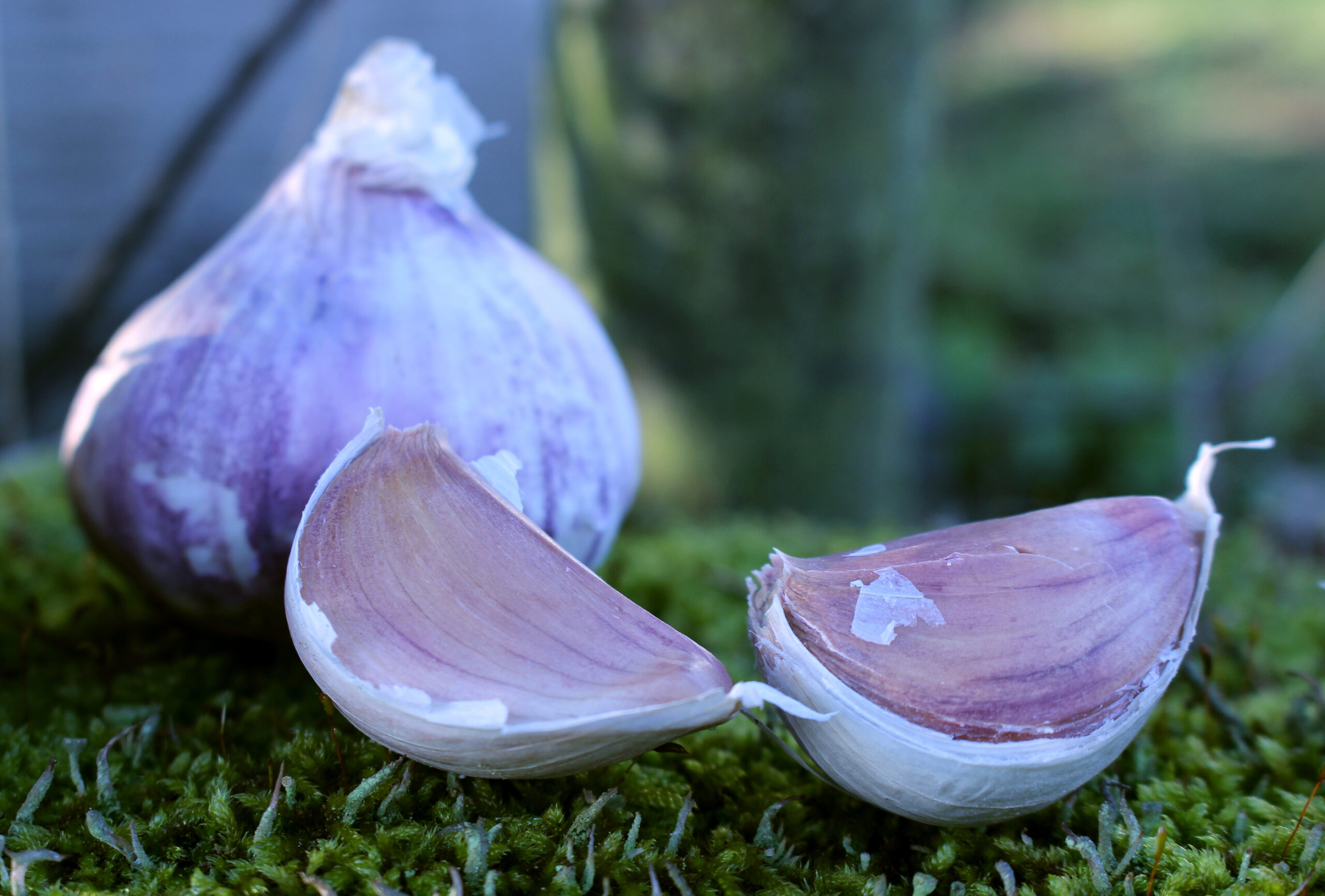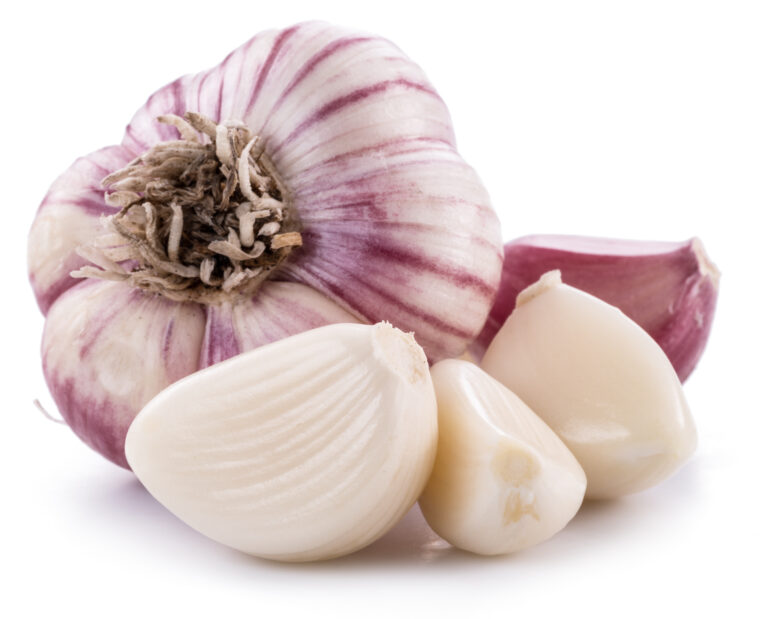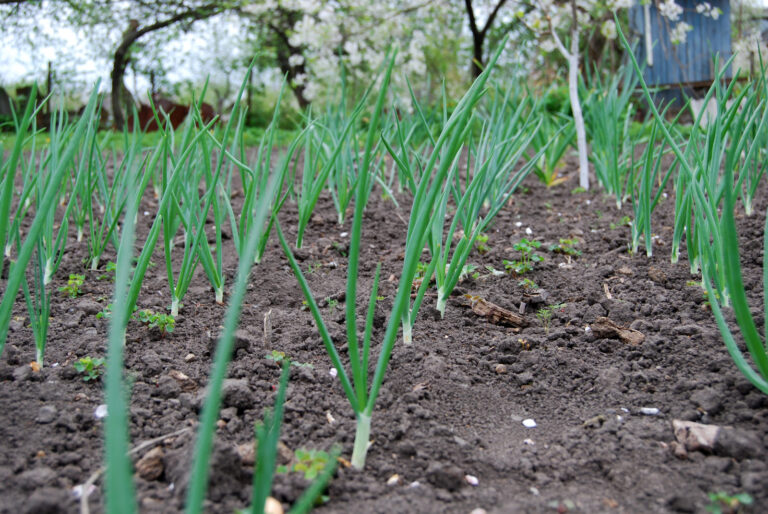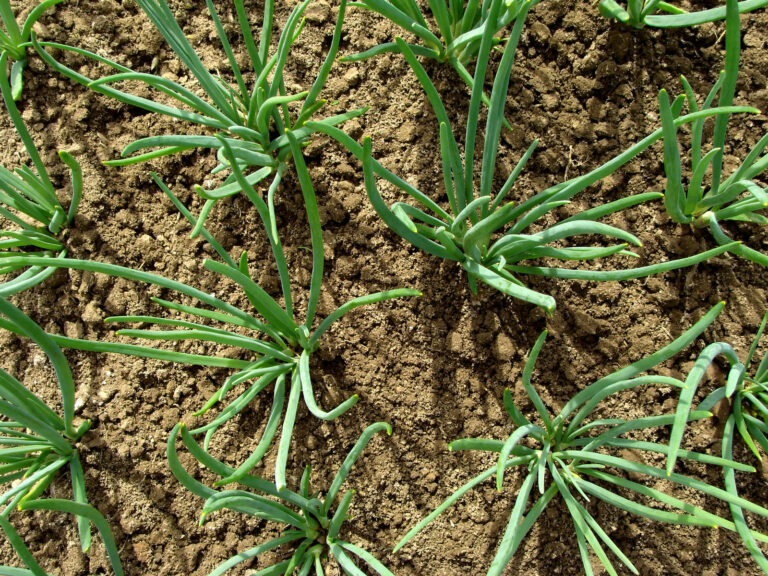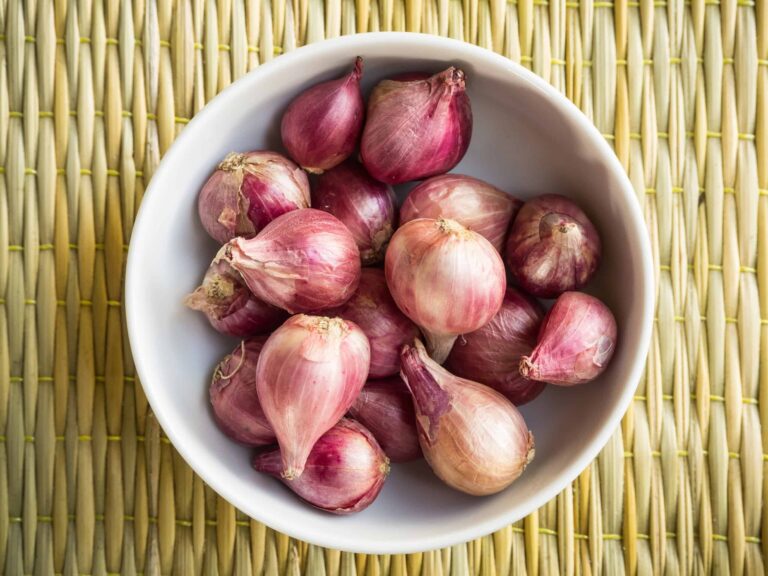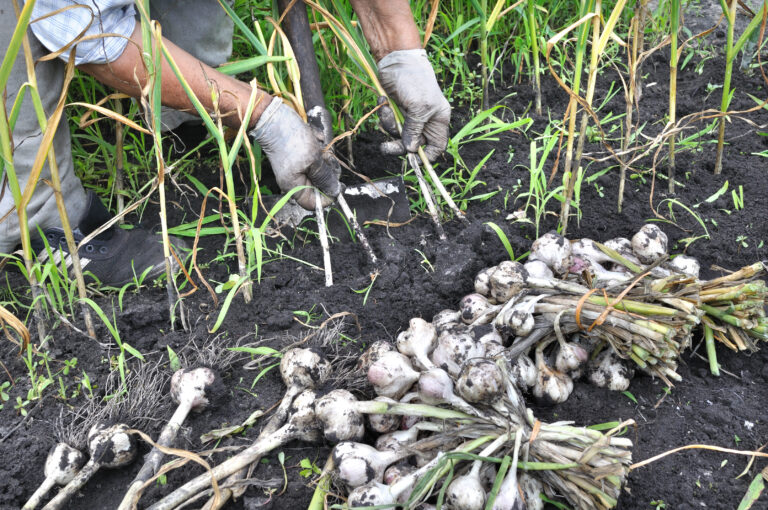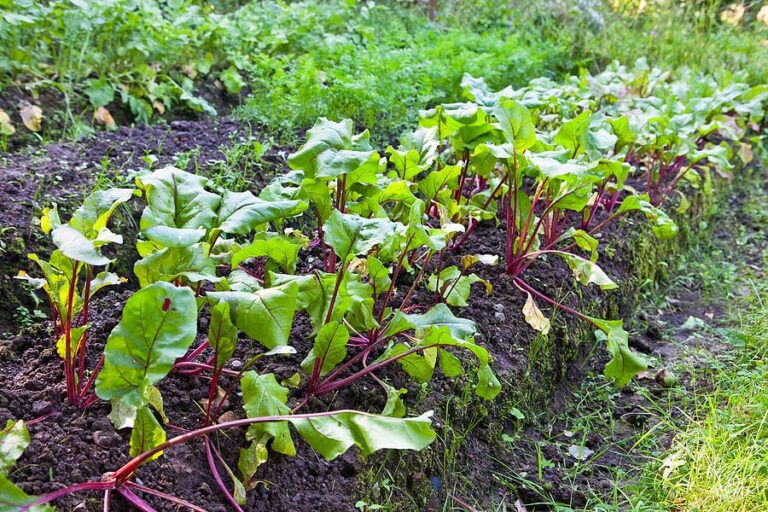Rocambole Garlic: What It Is and How to Grow It
Rocambole garlic is one of the most prized hardneck garlic varieties, known for its rich, complex flavor and easy-to-peel cloves. After growing it for decades in California’s Sierra foothills and Sonoma Valley, I can confidently say Rocambole is a gardener’s favorite when flavor is the top priority.
In this guide, I’ll explain what makes Rocambole garlic special and share step-by-step tips for planting, growing, and harvesting it successfully.
What is Rocambole Garlic?
- Type: Hardneck, with a stiff central stem.
- Flavor: Deep, robust, and complex—considered by many chefs to be the best-tasting garlic.
- Clove Count: 8–12 large cloves per bulb.
- Storage: 3–5 months; shorter than softneck varieties, so plan for timely use.
- Appearance: Tan to brown outer skin with a slightly papery wrapping around the cloves.
🌱 My tip: Rocambole’s strong flavor makes it ideal for raw dishes, roasting, and gourmet cooking.
Planting Rocambole Garlic
- Timing: Plant in fall, 4–6 weeks before the ground freezes. In warmer regions, pre-chill cloves in the fridge for 6–8 weeks.
- Soil: Well-drained, fertile soil with added compost. pH 6.0–7.0 is ideal.
- Spacing: Plant cloves 4–6 inches apart in rows 12 inches apart. Pointed end up, about 2 inches deep.
- Mulch: Cover with 2–3 inches of straw to protect against winter frost and regulate soil temperature.
Caring for Rocambole Garlic
- Watering: Keep soil evenly moist, especially during bulb formation; avoid waterlogging.
- Feeding: Side-dress with balanced organic fertilizer mid-season.
- Pest & Disease Management: Monitor for onion thrips and white rot; rotate crops every 3–4 years.
Harvesting Rocambole Garlic
- When: Usually mid-summer, when ½–¾ of the leaves have yellowed.
- Method: Gently loosen soil with a fork and lift bulbs.
- Curing: Dry in a warm, ventilated space for 2–3 weeks.
🌱 Gardener’s note: I also cut Rocambole scapes in late spring to redirect energy to bulb growth; they are delicious in stir-fries and pesto.
My Experience
Rocambole garlic is perfect for gardeners who value exceptional flavor and large, easy-to-peel cloves. While it doesn’t store as long as softneck varieties, its culinary qualities make it worth the extra care. Plant, mulch, water carefully, and you’ll be rewarded with some of the best garlic your garden can produce.
Rocambole Garlic Scapes: How to Harvest and Use Them
Learn when and how to harvest Rocambole garlic scapes and discover delicious ways to cook and preserve them.
Garlic scapes are the curly, tender flower stalks that emerge from hardneck garlic, especially Rocambole varieties. They are edible, flavorful, and a gardener’s delight. After decades of growing Rocambole garlic, I harvest scapes every spring to improve bulb development and enjoy their sweet, garlicky taste in the kitchen.
Why Harvest Garlic Scapes?
- Redirects Energy to Bulbs – Cutting scapes encourages the plant to focus on growing larger, more flavorful bulbs.
- Delicious Edible Treat – Scapes are tender, slightly sweet, and milder than mature garlic cloves.
- Early Spring Harvest – They provide fresh garlic flavor weeks before the bulbs are ready.
🌱 Tip from my garden: I always save a few scapes to taste raw in salads—they’re one of my favorite spring treats.
When to Harvest Rocambole Garlic Scapes
- Look for scapes that are long, curly, but not fully hardened.
- Typically, this occurs 2–3 weeks before bulb harvest, in late spring.
- Use a sharp knife or scissors to cut the scape at the base, leaving the plant intact.
How to Use Garlic Scapes
- Pesto: Blend with olive oil, nuts, and Parmesan for a bright spring pesto.
- Stir-Fries: Slice thinly and sauté with vegetables or proteins.
- Pickling: Quick-pickle for tangy, crunchy snacks.
- Grilling or Roasting: Toss in oil and roast for a sweet, mellow garlic flavor.
- Raw: Chop finely for salads or sandwiches for a fresh garlic kick.
Storing Garlic Scapes
- Refrigerator: Keep in a perforated bag up to 2 weeks.
- Freezing: Blanch briefly, then freeze in small portions for later use.
- Pickling: Preserves flavor for months.
Gardener’s Note
By harvesting scapes at the right time, I consistently see larger, more uniform Rocambole bulbs. Plus, scapes add a fun, gourmet ingredient to the kitchen long before the main garlic harvest.
🌱 Bottom line: Don’t let scapes go to flower—harvest them for taste and bulb size. They’re one of the simplest ways to get more from your Rocambole garlic patch.
Garlic Growing Hub
Start here: The Ultimate Garlic Growing Guide: From Seed to Harvest
🌱 Garlic Planting & Timing Clusters
- Garlic Plant Starting Tips: How to Get Going
- When to Plant Garlic: Fall vs. Spring Compared
- Garlic Planting Calendar by Zone (Month-by-Month Guide)
- Ideal Soil Temperature for Planting Garlic and Why It Matters
- Climate Guide: Growing Garlic in Warm vs. Cold Regions
🧄 Garlic Types & Varieties Clusters
- Softneck vs. Hardneck Garlic: Key Differences for Gardeners
- Best Softneck Garlic Varieties for Home Gardens
- Best Hardneck Garlic Varieties for Flavor and Storage
- Rocambole Garlic: What It Is and How to Grow It
- Elephant Garlic: Tips for Planting and Harvesting Giant Bulbs
🌿 Growing & Care Clusters
- Proper Garlic Spacing for Bigger Bulbs
- How to Water Garlic the Right Way
- Fertilizing Garlic: Feeding Tips Bigger, Healthier Bulbs
- Essential Garlic Care: From Planting to Harvest
- Best Companion Plants for Garlic (And What to Avoid)
- How to Grow Garlic in Containers: Step-by-Step Guide
🐛 Pests & Disease Clusters
🌾 Harvest & Storage Clusters
- How to Tell When Garlic Is Ready to Harvest
- How to Harvest and Store Garlic
- How to Cure Garlic for Long-Term Storage
- Best Ways to Store and Preserve Garlic at Home
🍳 Kitchen & Use Clusters
- Garlic Cooking and Severing Ideas for Your Harvest Table
- Fresh Garlic vs. Stored Garlic: Flavor and Cooking Differences
- Garlic Scapes: What They Are and How to Use Them
- Leeks vs. Green Onions vs. Garlic: What’s the Difference

